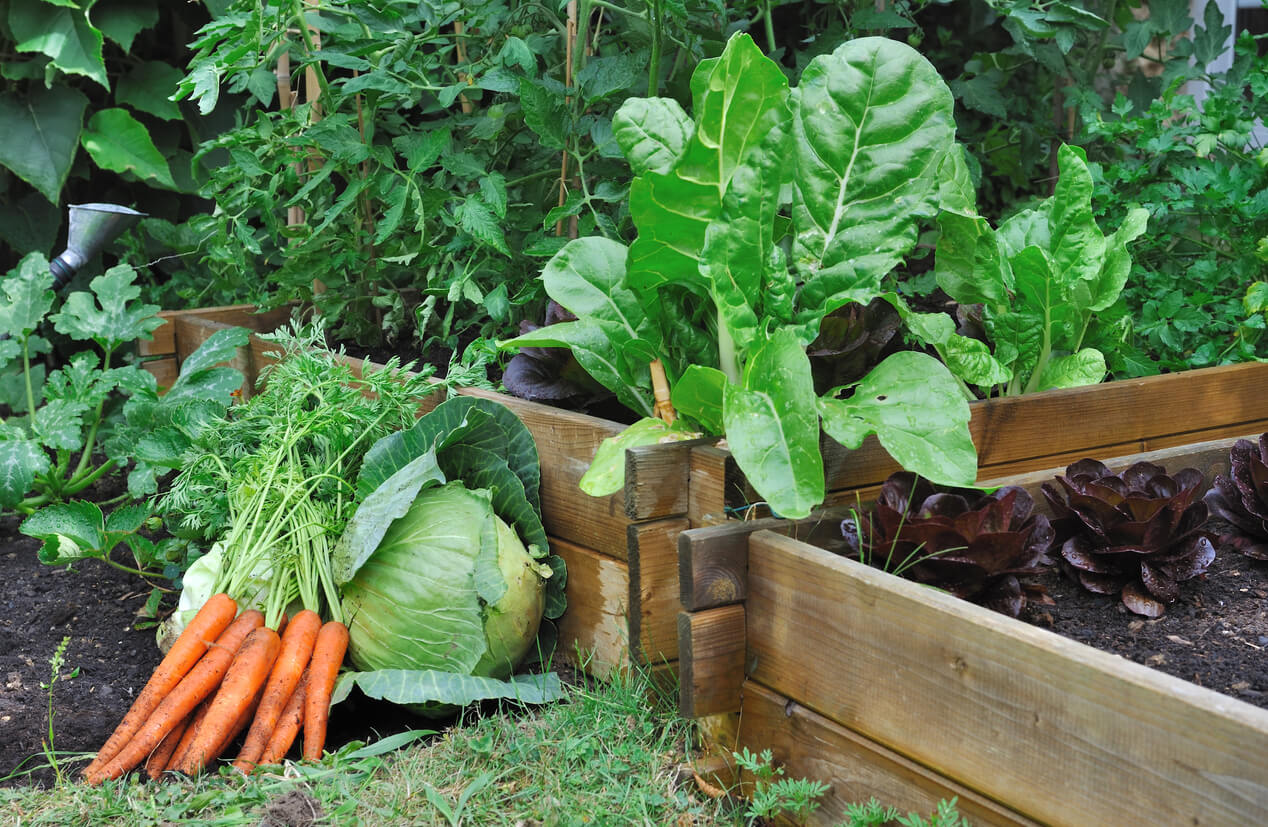There are some not-so-well-hidden secrets about planning your vegetable garden for a good harvest. The thing is, even though they aren’t exactly “secret,” they get skipped over a good bit.
To be fair, talking about soil testing isn’t nearly as enthralling as thinking about that late summer harvest of cucumbers and tomatoes. But some extra work up front often pays off. There are other secrets, too–hidden gems that will earn you a happier, healthier garden.
Discover 7 top tips for growing, harvesting, and enjoying tomatoes from your home garden—when you access the FREE guide The Best Way to Grow Tomatoes, right now!
The 12 secrets you need to know about planning your vegetable garden for delicious results
1. Choose your site. If you have options, find a location for your garden that gets plenty of sunlight.
2. Test your soil. Your plants need nutrients to grow and produce, and they get those nutrients from the soil. The only way to know what your soil may be lacking is to test it. Testing is also essential to determine whether there are any contaminants in the soil that you need to worry about.
3. Build or buy raised beds if needed. You don’t need raised beds, but they’re a great option if you have poor soil. When you fill your raised beds with healthy garden soil, you’re giving your vegetables a promising start. Raised beds are also good if you want something that won’t require bending over as much. They can also look tidier.
4. Plan your garden design. In planning your vegetable garden, it can be helpful to plot out your design either on a piece of graph paper or by using a garden design app. That way, you’ll have a good idea of how much can fit into your garden, what to plant where so all your vegetables get appropriate amounts of sunlight and water, and you can arrange for companion plants to go into the soil next to each other.
5. Keep an eye on the calendar and the weather. One way to ensure an abundant harvest is to start your seeds on time, whether that means sowing them directly in the soil or starting them indoors and transplanting them. Most seed packets will tell you when to start seeds in your region based on the last frost dates.
6. Rotate your crops. Even moderately-sized gardens can benefit from crop rotation. It helps reduce the number of harmful insects and can reduce diseases. Crop rotation also benefits the soil by allowing it to rest and replenish.
7. Take advantage of interval planting. One method of planning your vegetable garden for higher yields is to use a technique known as interval planting. One example is leaf lettuce, which you can sow every seven to 10 days, ensuring a regular harvest of delicious, crisp greens.
8. Take advantage of succession planting. Most four-season locations have several “planting” periods. So, for instance, you can start your season with peas, and once you harvest them, you can pull the plant and sow cucumbers.
9. Take advantage of interplanting. When you’re planning your vegetable garden, you don’t have to make everything in straight rows of one vegetable at a time. Instead, you can alternate companion plants. For example, you could plant basil between your tomatoes. Or if you opt for bunching plants together, you can go with traditional groupings like planting your corn, beans, and squash together.
10. Use row covers to extend your season. Row covers are a fabulous way to extend your growing season. They can keep pests away from tender seedlings in the spring, and help insulate plants from cold autumn winds at the end of the season. Just be sure to open up your covers once your plants start flowering so your local pollinators can help ensure your garden grows.
11. Plant native flowers. If there’s a surefire way to bring pollinators to your garden, it’s to plant native flowers in the area.
12. Spread things out. There’s no rule that requires your garden to exist in one spot. Plant some vegetables in a raised bed. Plant strawberries in a hanging basket. Keep a potted herb garden on your deck. Not only does that give you more space to grow, but if your local wildlife comes around, it will be more difficult for them to eat your entire garden in one sitting!
Do you have any additional tips for planning a productive garden? I’d love to read them in the comments.
[affiliate_note]
Discover 7 top tips for growing, harvesting, and enjoying tomatoes from your home garden—when you access the FREE guide The Best Way to Grow Tomatoes, right now!
